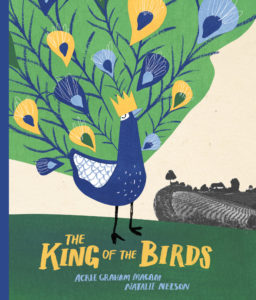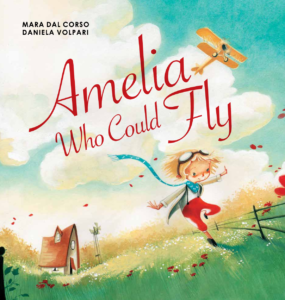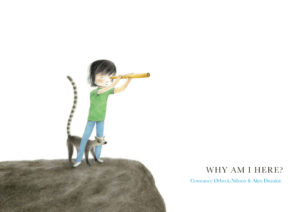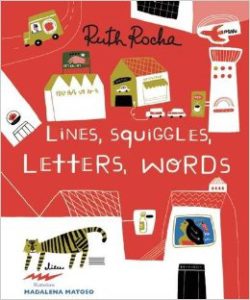And here we go, from some of my favorite independent presses, some really fantastic picture book offerings this winter season….
From Groundwood Books, The King of the Birds by Agree Graham Macam and pictures by Natalie Nelson, a biographical story about a young Flannery O’Connor who, it appears, was always as wonderfully eccentric and original as the strange stories she later wrote. After her first taste of fame when a newspaper profiled the chicken she taught to walk backwards, Flannery couldn’t go back to “normal” and saved her pennies to buy a peacock. The peacock wasn’t happy until Flannery, trying to cheer him up, got more than she bargained for….A glimpse into the early life of a writer later renowned for exploring the ways a drop of supernatural grace could transform depravity, could change a human being, could twist an otherwise ugly situation into something good.
From Kane Miller, Amelia Who Could Fly by Mara Dal Corso and illustrated by Daniela Volpari, another biographical story about a young Amelia Earhart who always dreamed big, always wanted to fly, and always looked for female role models of other women who set out to do bigger and better than people thought possible.
From Eerdmans Books For Young Readers, Why Am I Here? by
Constance Orbeck-Nilssen and Akin Duzakin, a philosophical story where a young child wonders why she exists in the world in the exact place where she lives. What if she’d been born in a war zone instead? What if she was homeless? What if she lived in a desert or a city? What if her home was destroyed by floods…or an earthquake…or other natural disasters? Would she still be who she is or would she be somebody else? Kids think about these things all the time as they try to grasp their own essential sense of “self” and where they belong in the world in relationship to everybody else. This book is a delightful way to initiate those conversations with children.
From Enchanted Lion, Lines, Squiggles, Letters, Words by Ruth Rocha and illustrated by Madalena Matoso (and translated from the Portuguese by our own Lyn Miller-Lachmann), a story about how children see the world before they recognize letters and words. My favorite line in this book is when the father tells his son that he’s recognizing letters because he’s learning how to “see.” While I know what we gain when we learn to see that way, I wonder what we lose? Do we lose the wonder that inhabited this child’s life before he learned to recognize those lines and squiggles as letters? While the text seems to collapse a child’s experience of learning to read (since I’m teaching my son to read this fall, it seems too simple and easy, though I do know that reading comes very easily to some children), it’s interesting to see the visual process come to life and to consider those larger questions about how we see the world–and what part literacy plays in seeing the world.



